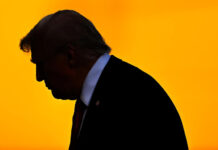April 11, 2013
Washington — Describing foreign students, nearly four in ten of whom come from India or China, as a "potential asset" to the US economy, a leading think tank wants Congress to ease their way to stay and work.
The number of all international students studying at US higher educational institutions has grown exponentially in the past 60 years, according to new research from the Brookings Metropolitan Policy Programme, Immigration Facts on Foreign Students.
April 11, 2013
Washington — Describing foreign students, nearly four in ten of whom come from India or China, as a "potential asset" to the US economy, a leading think tank wants Congress to ease their way to stay and work.
The number of all international students studying at US higher educational institutions has grown exponentially in the past 60 years, according to new research from the Brookings Metropolitan Policy Programme, Immigration Facts on Foreign Students.
"Foreign students are a potential asset to our economy that policymakers should keep in mind as they debate immigration reform," said Neil Ruiz, associate fellow at Brookings and author of the report.
"Expanding their access to US jobs could have particularly important impacts on the metropolitan areas where these students are most concentrated today."
Since 2000, the US witnessed a 49 percent increase in the number of foreign students, the report said noting this spike is primarily due to increased students from Asia.
Sixty percent of the growth can be attributed to students from China, and 23 percent from India.
In 2012, 64 percent of International students in the US hailed from Asia, 11.2 percent from Europe, 8.4 percent from Latin America, and 7.4 percent from the Middle East.
The leading sending nations were China and India, comprising 25.4 percent and 13.1 percent of all foreign students, respectively.
Of all foreign students, about 15 percent are studying for advanced degrees in science, technology, engineering, and mathematics (STEM) fields.
Of foreign students in STEM fields, considered critical knowledge for economic growth in the coming years, 64 percent are Chinese or Indian.
Indians make up the largest share of foreign STEM master's students (65 percent), while Chinese account for the greatest share of STEM doctoral students (38 percent).
But the current US visa system makes it challenging to retain foreign students, the report said noting wait time for a green card can be longer than 10 years, especially for individuals from highly backlogged countries such as India or China.
Courtesy: IANS (Arun Kumar can be contacted at arun.kumar@ians.in)











































































































